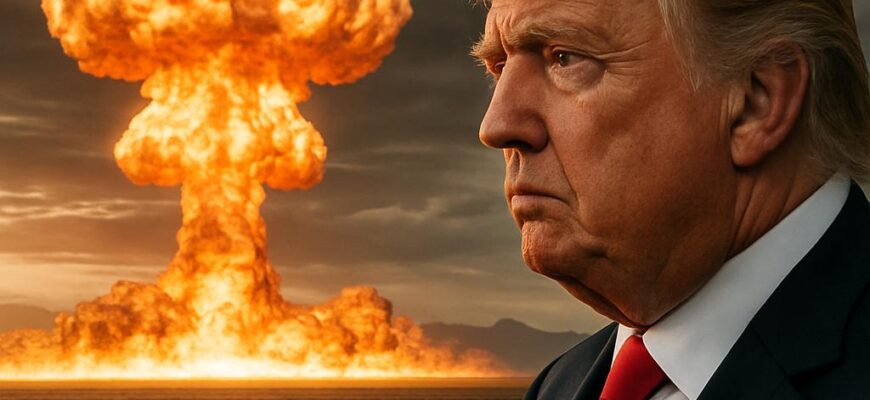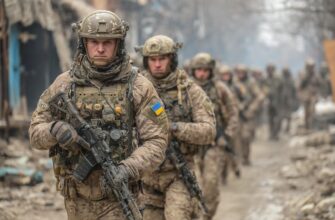Donald Trump wants to resume “nuclear weapons testing.” What does this mean and what could it lead to? That question flared across headlines because the idea cuts straight into hard-edged consequences—scientific, legal, diplomatic, and moral. This article walks through the mechanics of nuclear testing, why some policymakers press for it, what international institutions and rivals would likely do in response, and the real-world costs and risks that rarely make the sound bites.
- What was said and why the statement matters
- How nuclear testing works in practice
- Legal and diplomatic restraints
- Why some advocates push for testing
- What resuming tests would enable technically
- International reactions: who would follow and who would oppose
- Wider effects on the nonproliferation regime
- Environmental and health costs
- Economic and logistical realities
- Detection and attribution: you can’t hide a test
- Possible strategic futures: scenarios to consider
- Checks and balances within the U.S. system
- Historical analogies and lessons
- Alternatives to explosive testing
- What could happen next in policy terms
- Table: likely consequences of resuming nuclear tests
- Personal perspective from covering these debates
- Practical advice for observers and policymakers
- Where this could leave the world
What was said and why the statement matters
Public statements advocating a return to explosive nuclear tests are stark because the United States has not conducted a full-yield nuclear detonation since 1992. When a major political figure suggests restarting tests, it’s not a private technical debate: it signals potential policy reversal and a willingness to break decades of restraint.
That matters for three reasons. First, testing is not merely symbolic—explosive tests can validate new designs and influence the trajectory of weapons development. Second, it reshapes alliances and adversaries’ perceptions of U.S. intentions. Third, such a move would erode longstanding international norms against detonations and could spur others to follow suit.
How nuclear testing works in practice
Modern nuclear testing is almost always underground, to limit atmospheric fallout and to contain radioactive debris. A detonation underground produces seismic waves, gases, and sometimes venting; monitoring systems around the world are built specifically to detect these signals and identify tests almost immediately.
For decades the U.S. has relied on the Stockpile Stewardship Program instead of explosive tests. That program uses subcritical experiments, advanced computer modeling, and material science to assess and certify warhead safety and reliability. Those tools have sustained the stockpile, but they do not replace a full-yield detonation when it comes to validating new designs or certain performance claims.
Legal and diplomatic restraints
There’s a complex legal landscape around testing. The Comprehensive Nuclear-Test-Ban Treaty (CTBT) bans all nuclear explosions, but it has not entered into force because a number of key states, including the U.S., have not ratified it. The U.S. signed the CTBT in 1996 but the Senate declined to ratify it in 1999.
Even without CTBT ratification, the United States has observed a unilateral testing moratorium for decades and participates in the CTBTO’s International Monitoring System. Resuming tests would undercut long-standing U.S. policy and invite diplomatic pushback, sanctions, or retaliatory measures from countries that see the move as destabilizing.
Why some advocates push for testing
Proponents argue that tests are necessary to develop new warheads or to ensure the reliability of existing ones after decades of storage and maintenance. They point to aging components, uncertainties in high-yield performance, and the desire to deter adversaries with credible modernization.
There’s also a signaling component. A visible resumption of testing would communicate a willingness to escalate and innovate in ways that could affect deterrence calculations. For some strategists, that signal is meant to shore up deterrence; for others it looks like an invitation to an arms race.
What resuming tests would enable technically
Explosive tests allow designers to validate physics under true detonation conditions—pressure, temperature, and radiative effects that cannot be perfectly simulated. They can accelerate the development of more compact, accurate, or more rugged warheads, and enable warheads tailored to new delivery systems or tactical roles.
However, the technical gains are specific. Tests do not automatically create perfect weapons; they provide data to reduce uncertainty in design. Repeated testing campaigns could shorten development cycles, but they require significant infrastructure, personnel, and time to interpret results and iterate designs.
International reactions: who would follow and who would oppose
International responses would likely vary by region. Russia and China would watch closely and calibrate their own choices; both have conducted tests historically and maintain substantial arsenals. North Korea, which continues to test, would cite U.S. testing as justification for expanding its program further.
U.S. allies would face difficult choices. NATO members might privately support stronger deterrence but publicly decry the erosion of norms. Non-nuclear states and the broader nonproliferation community would likely condemn new tests and push for punitive diplomatic responses.
Wider effects on the nonproliferation regime
One of the most consequential effects would be the weakening of the global taboo on testing. The taboo didn’t appear overnight; it grew from decades of diplomacy, treaty work, and civil-society pressure. A U.S. return to testing risks normalizing explosions and delegitimizing instruments aimed at preventing proliferation.
If testing becomes politically acceptable again, states sitting on the fence about weaponizing or expanding their arsenals might calculate that the international consequences are now manageable, triggering a cascade of breakout decisions that would be harder to reverse.
Environmental and health costs
Even underground testing can produce environmental damage. Past tests at sites like Nevada and Semipalatinsk (now in Kazakhstan) contaminated soil and groundwater, displaced communities, and left long-term health effects in exposed populations. The physical footprint of a new test program would include monitoring, cleanup, and potential compensation obligations.
Beyond local contamination, testing can have diplomatic-side health and environmental costs: increased public fear, protests, and strained relations with neighboring countries. Those outcomes carry political weight in democracies where public opinion can influence policy.
Economic and logistical realities
Restarting a testing program would not be free. Facilities such as the Nevada National Security Site would need upgrades, instrumentation, and renewed regulatory approvals. Human expertise lost to retirement or attrition would have to be rebuilt through hiring and training, which takes years and significant funding.
Congress controls budgets and could constrain or block funding for a testing campaign. The economic debate is not just about the direct cost of a single test; it’s about sustaining a program that supports multiple tests and the associated R&D over time.
Detection and attribution: you can’t hide a test
The CTBTO’s International Monitoring System is highly capable: seismic, hydroacoustic, infrasound, and radionuclide sensors can detect and attribute tests with high reliability. A clandestine test is unlikely to remain secret for long, and attribution often comes quickly enough to trigger diplomatic responses.
Several historical examples show how detection works; a recent small-nation test was identified within hours due to seismic signatures. This reality reduces any notion that resuming U.S. testing could be a subtle, deniable act.
Possible strategic futures: scenarios to consider
There are several plausible trajectories if testing resumes. One path is limited, symbolic testing intended to validate a specific design and then stop. Another is a longer-term modernization effort that produces a new class of warheads and spurs an arms competition.
A more dangerous scenario is reciprocal testing by rivals, accelerating weapons development worldwide. Each test raises incentives for others to test, in turn increasing risk and lowering the political costs of future detonations outside controlled regimes.
Checks and balances within the U.S. system

Even if an administration proposes testing, it must navigate legal, bureaucratic, and political checks. Congress controls funding, regulatory bodies must authorize environmental impacts, and scientific agencies provide assessments that can shape political calculations.
Public opinion matters as well. Past public resistance to atmospheric testing helped push the U.S. and other countries into moratoria. A testing push today would likely encounter public debate, protests, and legal challenges that could stall or shape any program.
Historical analogies and lessons
History shows that nuclear testing can lock in strategic trends. The U.S. and Soviet testing programs in the mid-20th century fed a rapid accumulation of designs and yields, hardening the Cold War’s arms race dynamic. Conversely, testing moratoria in the 1990s helped create a new norm and opened diplomatic space for arms control.
Those precedents suggest that policy choices about testing are not easily reversible: once norms erode, rebuilding them takes decades and sustained diplomatic effort. That’s why the stakes are high when a geopolitical leader signals a willingness to test again.
Alternatives to explosive testing
The United States already has tools that obviate many reasons to test: subcritical experiments, hydrodynamic tests, advanced supercomputing, and joint experiments with allied labs. These capabilities can reduce technical uncertainty without detonating a warhead.
Investing in these alternatives preserves the nonproliferation norm while addressing reliability concerns. It’s a path that keeps international credibility intact and minimizes environmental and political fallout.
What could happen next in policy terms
At minimum, public calls for testing will spark congressional hearings, expert panels, and renewed scrutiny of the Stockpile Stewardship Program. The debate would force officials to lay out technical justifications, projected costs, and expected strategic benefits in a way that the public and allies can evaluate.
If the administration pursued an actual test, expect legal and diplomatic responses within days: statements from allies, UN calls for restraint, and potentially coordinated measures aimed at preserving the nonproliferation framework.
Table: likely consequences of resuming nuclear tests
| Area | Short-term effect | Long-term effect |
|---|---|---|
| Diplomacy | Condemnation, pressure on allies | Erosion of global norms, fractured alliances |
| Security | Improved confidence in specific designs | Arms race and proliferation risks |
| Environment | Localized contamination risk | Long-term health and cleanup liabilities |
| Economy | Significant program costs | Ongoing budget pressures and opportunity costs |
| Nonproliferation | Weakened compliance incentives | Higher global breakout risks |
Personal perspective from covering these debates
In my reporting on national security, I’ve seen how technical arguments—about yields, margins, and simulations—often collide with political realities. Experts can disagree about the necessity of a single test, but they usually agree that the diplomatic cost is immediate and long-lasting.
The most persuasive policy conversations I’ve observed are those that balance technical needs against strategic consequences, looking for middle paths that reduce risk without abandoning deterrent goals. That middle ground is where subcritical tests and better diplomacy can make a difference.
Practical advice for observers and policymakers

If you’re following this debate, watch the specific justifications presented: Are they narrow and technical, or broad and programmatic? Narrow reasons—validating a single component—are easier to evaluate and limit than grand claims about a full-scale modernization campaign.
Policymakers need transparent cost-benefit analyses, independent technical reviews, and a diplomatic strategy for how to manage allies and rivals. Absent those, a decision to test risks being reactive and costly rather than strategic.
Where this could leave the world
Resuming explosive nuclear tests would reinvigorate an old dynamic: visible competition and a weakening of restraint. Whether that becomes a brief episode or a long-term shift depends on the scale and duration of testing and the international community’s response.
The most likely near-term outcome is heightened tension and rhetorical retaliation, while the longer-term stakes involve potential proliferation and a fraying of institutions designed to prevent the spread of nuclear arms. That’s why debates about testing matter far beyond one country’s technical program.
If you want to explore more in-depth analyses and follow ongoing developments, visit https://themors.com/ and read other materials from our website. The conversation about nuclear policy is complex and consequential, and it deserves careful, informed attention.









